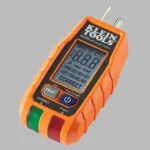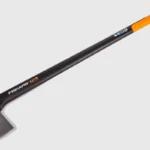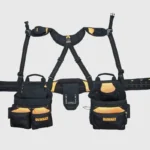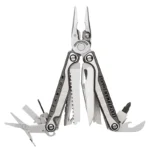An angle grinder is a powerhouse tool that packs versatility in its compact frame. Whether you’re a DIY enthusiast, a professional contractor, or somewhere in between, knowing the nuts and bolts of your angle grinder can make all the difference.

Let’s break down the essential components and their practical applications.
Power Lever
First up, the power lever. This is your go-to switch for turning your angle grinder on and off. It’s usually located on the main handle and comes in the form of a button, lever, or trigger. Simple, but crucial. Imagine you’re in the middle of a cutting job, and your tool won’t start—frustration central! Always check your power lever before diving into any task.
Speed Control Dial
Next is the speed control dial. Not every angle grinder has this feature, but it’s a game-changer when it does. Think of it like the volume knob on your stereo, but instead of tunes, you’re adjusting the rotation speed of your disc. Need a gentle touch for polishing metal? Dial it down. Cutting through tough stone? Crank it up.
Lock Button
The lock button is your friend for long, continuous tasks. This little button lets you keep the grinder running without having to squeeze the trigger the whole time. Your hands will thank you during those extended grinding sessions. Ever tried to grind metal with one hand cramped from holding the trigger? Not fun.
Side Handle
The side handle is the unsung hero of the angle grinder. It provides extra stability and control, which is vital when you’re working with a tool spinning at thousands of RPM. Most grinders allow you to screw it in on either side, making it ambidextrous. Imagine trying to slice through metal with just one hand—wobbly cuts and possible injuries. No thanks!
Main Handle
The main handle is where the magic happens. It’s the primary grip point, housing most of the controls, including the power lever and speed dial. Ergonomically designed to reduce fatigue, it’s your anchor during operation. You wouldn’t drive a car without a steering wheel, right? Same logic here.
Body
The body, or housing, of the angle grinder holds everything together. It encases the motor and internal components, protecting them from dust and debris. A solid body ensures your grinder lasts longer and performs better. It’s like the frame of a car—without a sturdy one, everything else falls apart.
Motor
Ah, the motor—the heart of your angle grinder. This is what generates the power needed to spin the disc. Motors come in various power ratings, affecting how efficiently your grinder can handle different tasks. Need to cut through thick steel? A more powerful motor is your best bet.
Spindle
The spindle holds and spins the disc. It’s the link between the motor and the cutting or grinding wheel. Think of it as the axle on a car wheel. A reliable spindle means your discs spin true and steady, giving you cleaner cuts and smoother grinds.
Blade Guard
Safety first! The blade guard covers part of the disc to protect you from flying debris and accidental contact. Always ensure your blade guard is properly attached and positioned. It’s like a seatbelt—might seem annoying, but it can save you from serious harm.
Discs and Wheels
The type of disc or wheel you use dictates what tasks you can tackle. Here’s a quick rundown:
- Grinding Wheels: Perfect for smoothing metal surfaces.
- Cut-off Discs: Ideal for cutting through metal, stone, or concrete.
- Flap Discs: Great for sanding and finishing.
- Wire Brushes: Excellent for removing rust and paint.
- Diamond Blades: Best for cutting tile, stone, and concrete.
Grinding Wheels
Grinding wheels are your go-to for smoothing metal. They come in various diameters and grit levels. Higher grit numbers give you a finer finish, while lower grits are perfect for rough, fast grinding. Picture sanding down a rough wooden table—the same concept applies here.
Cut-off Discs
Cut-off discs are thin and designed for slicing through materials like metal and stone. They wear down faster than grinding wheels but are indispensable for precise cuts. Imagine trying to cut a thick piece of metal pipe with a dull saw—it’s not happening. That’s where these discs shine.
Flap Discs
Flap discs are versatile and combine the benefits of grinding and sanding. They have overlapping pieces of sandpaper-like material and are great for finishing touches. Think of them as the multitool in your toolbox, handy for a variety of tasks.
Wire Brushes
Wire brushes are your best friend for cleaning up metal surfaces. They come in various shapes and sizes, perfect for removing rust, paint, or other stubborn materials. Ever tried cleaning a grill with just a sponge? Switch to a wire brush and see the magic.
Diamond Blades
Diamond blades are designed for cutting through hard materials like stone and tile. They’re durable and provide clean cuts without chipping. Imagine trying to slice through a ceramic tile with a regular blade—disaster. Diamond blades make it a breeze.

Matthew Dowell
Matthew, a seasoned builder from a family of craftsmen, leads Tools Trove. His passion for tools and decades of hands-on experience fuel his commitment to providing expert reviews and insightful content. Whether you’re a pro or a DIY enthusiast, Matthew’s guidance ensures informed decisions in the world of tools.




